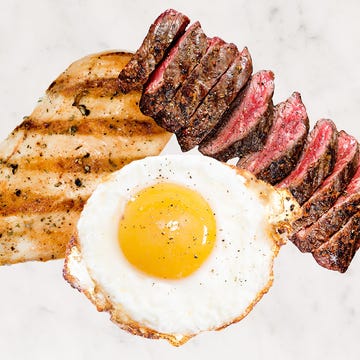20 Years of Food Network: What We Learned from the Celebrity Chefs

1993: The Television Food Network

The date was November 23, 1993. The setting was New York City's Rainbow Room. That's where folks gathered, high above Rockefeller Center, to celebrate the launch of TVFN, The Television Food Network. According to From Scratch: Inside the Food Network, in TVFN's first year, stars that appeared on the network included Robin Leach of "Lifestyles of the Rich and Famous," chef David Rosengarten, Donna Hanover (then the wife of New York City Mayor Rudy Giuliani), and even former "Saturday Night Live" cast member and funnywoman Jane Curtain.
1994: The Essence of Emeril

Emeril Lagasse, once referred to by Food Network executives as the "Engagin' Cajun," began taping his first episode of "Essence of Emeril" during the summer of 1994, as reported in From Scratch. And we all know how the story went from there. Lagasse showed viewers the merits of Creole cuisine and that cooking could be fun, inclusive, and have sound effects — BAM! He also introduced viewers to a wide range of easy-to-replicate gourmet recipes, always with a plan to "kick it up a notch."
1995: Too Hot Tamales

In its infancy, the Food Network had a few "stand and stir" shows mixed in with food news programming. Looking to add a little more zest, the network welcomed Mary Sue Milliken and Susan Feniger, a.k.a "Too Hot Tamales," to the lineup. The duo, both classically trained chefs who co-owned Border Grill, a modern Mexican eatery in Santa Monica, CA, taught viewers their way of fusing Mexican flavors with ingredients that many cooks didn't traditionally associate with Latin cuisine.
1996: Batali and Bobby
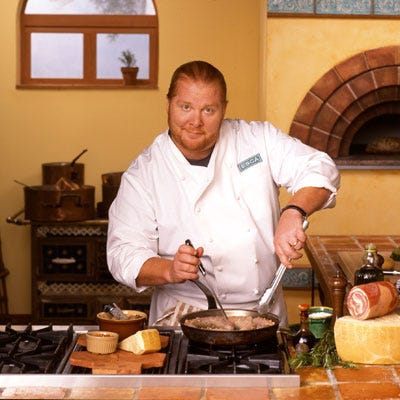
Nineteen ninety-six brought two (soon-to-be) celebrity chefs to the network — Mario Batali and Bobby Flay. Flay was a young gun in New York's dining scene, with a dedicated following at his Flatiron restaurants, Bolo and Mesa Grill. Batali was cooking up a storm at his own eateries with business partner Joe Bastianich (son of PBS cooking show host Lidia Bastianich). Batali's first Food Network program, "Molto Mario," was a window into true Italian cuisine — not the Americanized version so many were accustomed to. Flay was asked to co-star in "Grillin' and Chillin'," and according to From Scratch, it was Flay's idea to "raise the profile" of outdoor cooking, adding recipes with lamb, lobster, and spice rubs.
1997: Two Fat Ladies
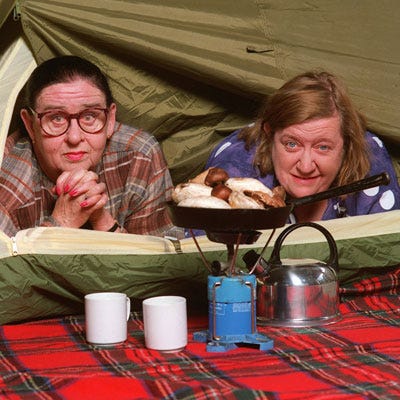
Not to be confused with the two "hot tamales," this British duo brought to light the hearty cuisine that was indigenous to England. Always adding a dash of humor, Clarissa Dickson Wright and Jennifer Paterson visited artisans and made their food discoveries while riding on a Triumph Thunderbird motorcycle — Paterson on the saddle while Wright rode in the sidecar. The pair then prepared an indulgent feast, usually in castles and cathedrals that dotted the English countryside. Recipes favored lard and butter, and the two happily devoured everything at the end of every episode.
1998: East Meets West

When Ming Tsai made a splash with his Boston-area restaurant Blue Ginger, Food Network executives took notice. Tsai joined the network in 1998 as host of "East Meets West," allowing the learned chef to teach his Asian fusion methods to home cooks. The show not only impressed viewers, but also the critics — Tsai received a prestigious Daytime Emmy. Tsai made other appearances on the network, competing against chef Bobby Flay on "Iron Chef America" and winning the culinary battle of all battles.
1999: Alton Brown Teaches Us Good Eats
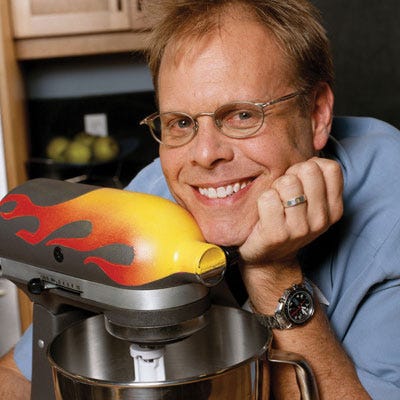
It is hard to believe that it was more than a decade ago that Food Network introduced us to Alton Brown and "Good Eats." Unlike any show before it, "Good Eats" explored food in an unusual and intimate way with a focus on education. Using interesting facts and close-up shots of ingredients, Alton Brown added science to the cooking show equation. "Good Eats" became smart programing that everyone, nerdy or not, could indulge in.
2000: Jamie Oliver Gets Naked

Before Jamie Oliver brought his controversial "Food Revolution" to ABC, the boyish British chef made his American debut on Food Network. Already popular on BBC2, Oliver's show, "The Naked Chef," introduced viewers to simple cooking using fresh ingredients. Oliver was fully clothed; it was the recipes that were on display.
2001: EVOO Enters the Lexicon
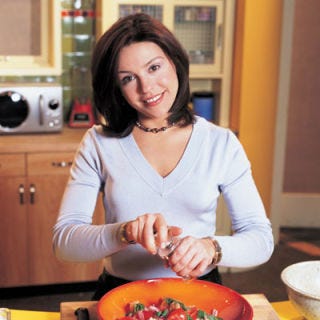
Without Rachael Ray, we would all still be wasting our breath uttering the proper name for "EVOO" (extra-virgin olive oil). Clever abbreviations weren't Ray's only skill. She brought the same time-saving aproach to her "30 Minute Meals," highlighting clever tips to create recipes that had to be "Yum-O"!
2002: Paula and Ina
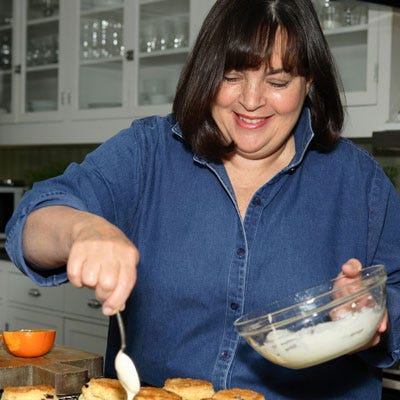
Two queens of the kitchen were born on the Food Network in 2002. Paula Deen donned the butter crown while Ina Garten became the unofficial queen of basics done beautifully. Deen treated viewers to real, no holds barred Southern comfort food on "Paula's Home Cooking." Her enthusiastic attitude and indulgent dishes made viewers want to step inside the screen and stand by her side. Ina Garten earned devotees for her entertaining ideas. Her highly rated show, "The Barefoot Contessa," proved how easy it was to cook elegant meals with just a few quality ingredients.
2003: Giada and Sandra
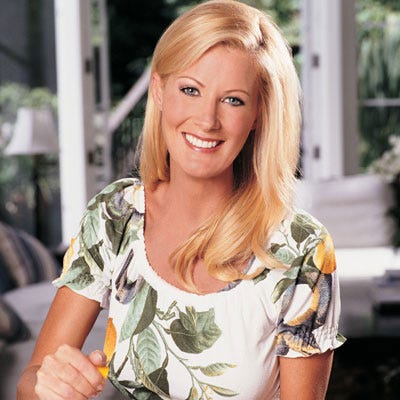
If Rachael Ray's tips made things quicker in the kitchen, Sandra Lee's made dishes that were lightening fast. Lee's "Semi-Homemade" meals were just what American home cooks were craving — quick, low-cost dinners that combined canned and packaged items, resulting in minimal effort. That same year, Giada De Laurentiis attracted viewers looking to get the inside track on authentic Italian dishes. On "Everday Italian," De Laurentiis taught us how to make impressive Italian meals with a Californian twist. Her informative tricks brought us meatballs with ketchup and cookies on a stick.
2004: Food Network Gets Competitive

We may have never traveled to "Diners, Drive-ins, and Dives" had it not been for "The Next Food Network Star." The show that launched Guy Fieri's television career was conceived in 2004, when other networks were flooded with reality-show competitions. Internally, Food Network executives knew they had to jump into the competition arena. In 2005, they aired the first season of "The Next Food Network Star" with a grand prize of six episodes awarded to the victor. When the second season aired in 2006, a spiky-haired Guy Fieri was declared the winner.
2005: Chefs Enter Kitchen Stadium
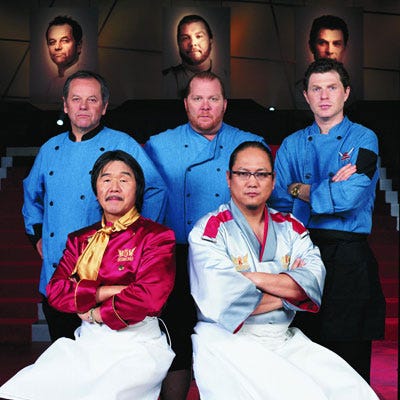
A cornerstone of the network in its early days, the original Japanese version of "Iron Chef" had a cult following, which Food Network executives thought would become mainstream if it were reimagined in English. They were right. In 2005, the "nephew" of the Chairman called chefs Flay, Batali, Puck, and Morimoto to battle by saying, "So now America, with an open heart and an empty stomach, I say unto you in the words of my uncle: 'Allez cuisine!'" Episode after episode, we learned the infinite number of dishes the chefs could create with one star ingredient in just 60 minutes.
2006: Ace of Cakes
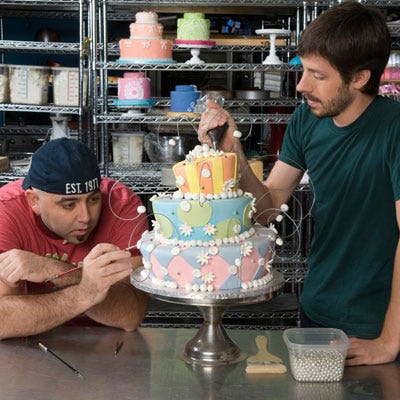
Sugary sensations were always a part of the network, from Debbi Field's (a.k.a Mrs. Fields) "Dessert Show" to Gale Gand's "Sweet Dreams," but Duff Goldman's creations were a real game changer. He and his Charm City Cakes crew tempted the viewers of "Ace of Cakes," giving them a behind-the-scenes look at what goes into making show-stopping cakes. We learned the magic of fondant and why a power saw can come in handy when making a custom cake.
2007: Guy's Road Trip
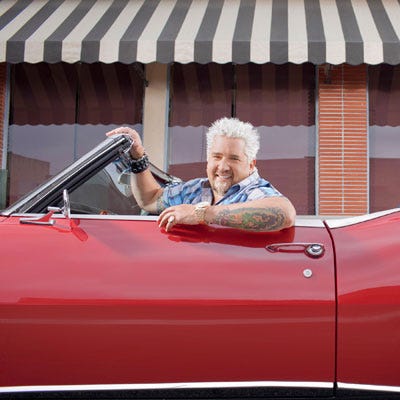
"Diners, Drive-ins, and Dives" did for foodies what backstage access did for concert groupies. Riding shotgun with Guy Fieri, audiences learned the secrets behind those time-honored recipes that stalwarts of many an American roadside diner, drive-in, or dive praised.
2008: Sunny Anderson Shines

Three years after Sunny Anderson made a guest appearance on "Essence of Emeril," she debuted on the network with her own show, "Cooking for Real." Anderson focused on real cooks, making real meals for "real life." Her comfort food dishes were always a hit, showing viewers there are ways to elevate even the simpliest dishes. Fun fact: A former DJ, Anderson was also in the Air Force.
2009: Chefs Get Chopped
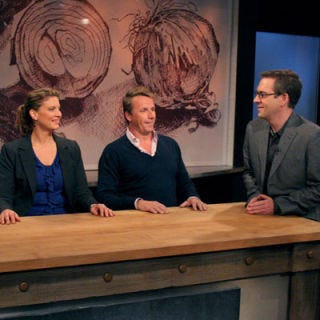
"Chopped" was the show that gave unsung chefs a stage to shine. Taking a cue from "Iron Chef Amercia," four chefs competed using a mystery basket of ingredients that they had to turn into a dish. At each round, one chef would be chopped until, by dessert, there were just two chefs left. Hosted by food expert Ted Allen, the show taught us that even a dish made with Gummi Bears, turkey, and strawberries could earn praise from a panel of celeb chef judges.
2010: Food Network Starts Cupcake Wars
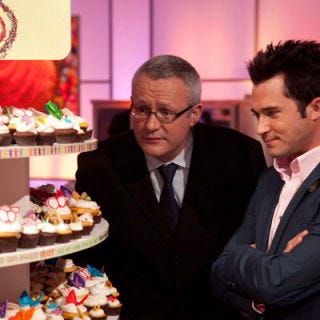
With unlimited iterations of this handheld treat, no one could ever grow tired of cupcakes. But whose cupcake is the best? That's what's decided on each episode of "Cupcake Wars," where pastry chefs go head-to-head baking, icing, and decorating cupcakes based on a theme or ingredient. Who knew that television's classic soap operas could be fashioned into creative cupcake flavors?
2011: A Pioneering Woman
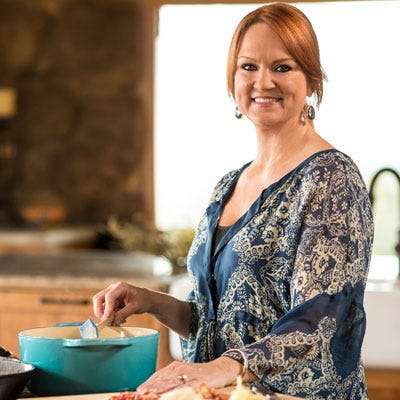
While celebrity chefs with big personalities, like Emeril Lagasse, are what the network was built upon, regular home cooks were as easy to fall in love with. Cookbook author and blogger Ree Drummond connected to audiences with down-home recipes she shared from her ranch in Oklahoma. The city-gal-turned-rancher's-wife, a.k.a. "Pioneer Woman," showed viewers how to turn simple country recipes into masterful (and mouthwatering) meals the whole family would enjoy.
2012: Celebrities Cookoff
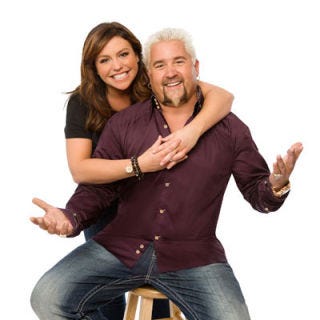
If you take NBC's "The Voice," substitute food for the music and Food Network icons Rachael Ray and Guy Fieri for coaches CeeLo Green and Christina Aguilera, what do you get? Something like "Rachael vs. Guy." What has it taught us? Coolio really does know his way around a kitchen, and comedian Gilbert Gottfried, unfortunately, does not.
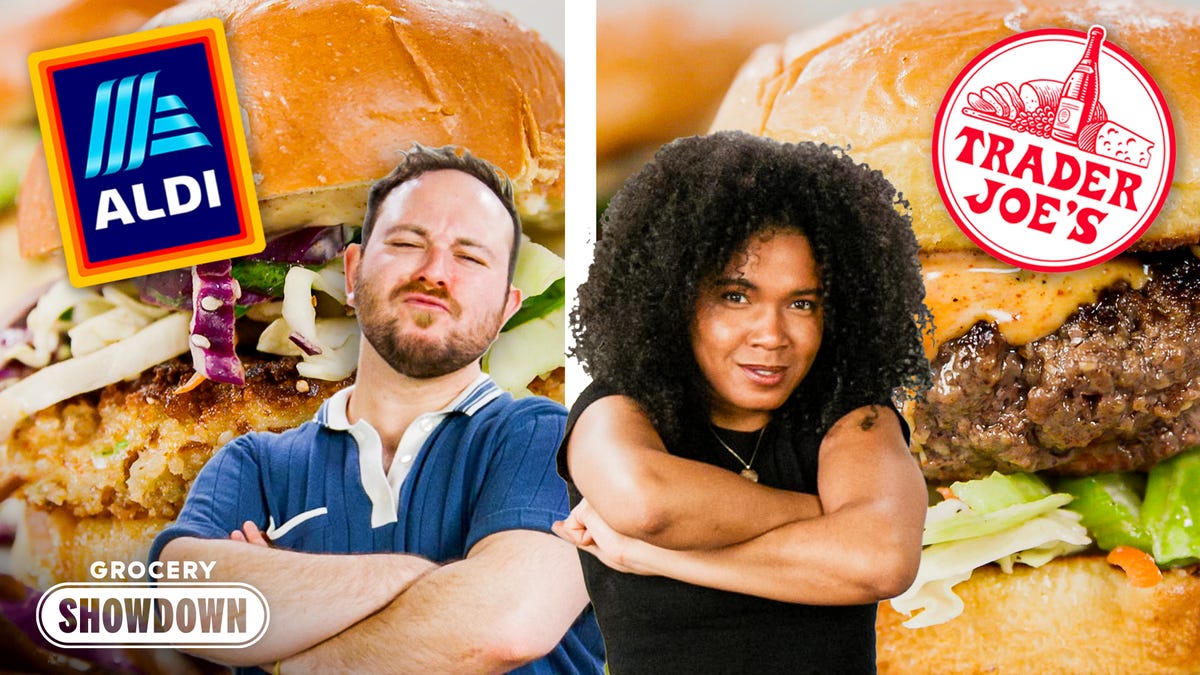

Chefs Reveal What Restaurant Life Is Really Like

Starbucks Is Selling The Most Adorable Keychains
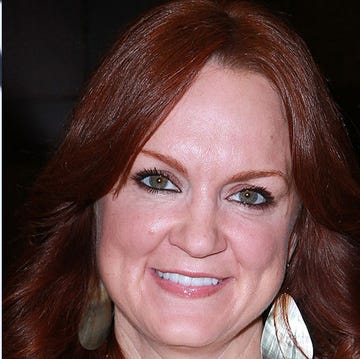
7 Food Network Stars Have Made Millions

7 Things To Know About Being A Private Chef
